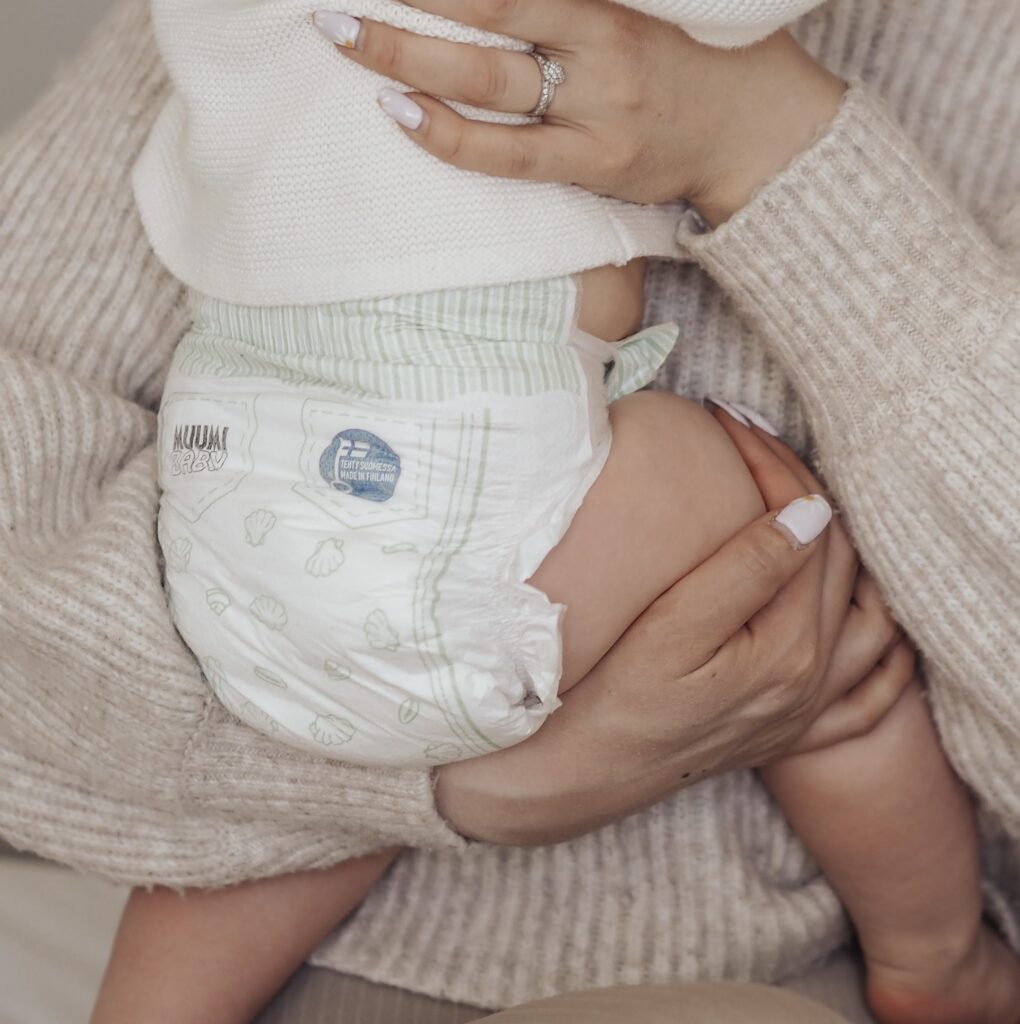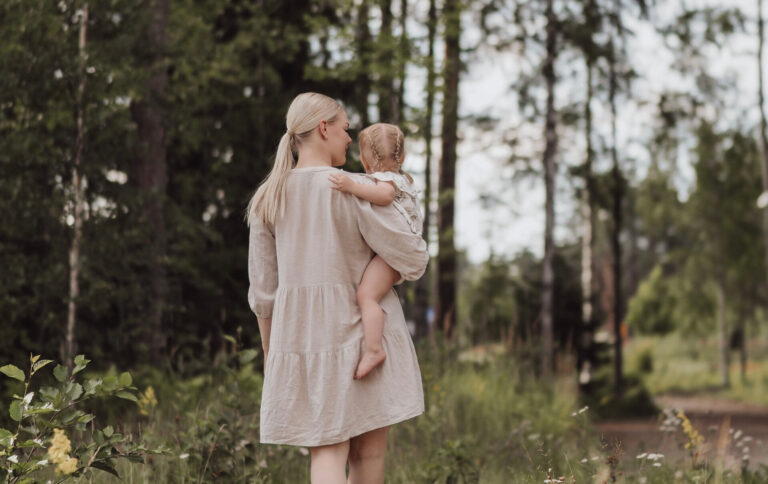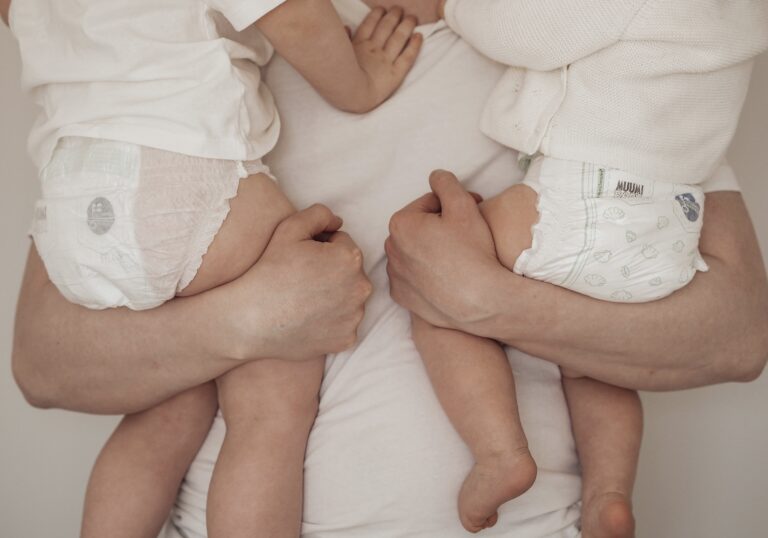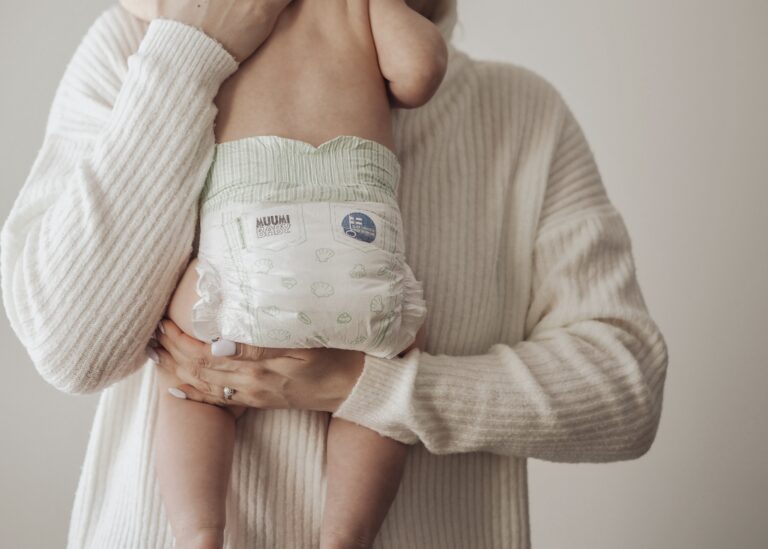Diaper changing is an essential and recurring part of baby care, but it can sometimes feel like a challenging and time-consuming task. Fortunately, with the right tools and practical tips, you can make diaper changing smoother and more comfortable for both you and your baby. Diaper changing is not only a necessary procedure, it can also be a special moment of closeness and interaction with your baby. Whether you’re a first-time parent or a seasoned expert, this article will give you practical tips and advice to make diaper changing a breeze.
In this article, we also provide you with a comprehensive guide that contains all the information and tips you need to make your diaper changing experience go smoothly. We cover topics such as the tools you need, step-by-step instructions for diaper changing and methods to make your baby more comfortable. We also cover hygiene, diaper rash prevention and special situations such as changing diapers on the go. We also introduce Moomin Baby diapers, designed to make diaper changing easier and as comfortable as possible for both parents and baby. Join us to learn how you can turn diaper changing moments into positive and hassle-free experiences!
Equipment needed for diaper changing
Diaper changing is much easier when all the necessary tools are ready and easily accessible. The first thing you need, of course, is clean diapers, and Moomin Baby diapers can be an excellent choice thanks to their softness and fit. It’s also worth making sure you have an adequate supply of diaper changing pads that protect surfaces and are easy to clean.
Wet wipes are an important tool to make cleaning your baby’s delicate skin quick and easy. They come in different types, but it’s a good idea to choose skin-friendly and fragrance-free options that are suitable for your baby’s sensitive skin. Alternatively, you can use soft, damp cloth wipes that can be washed and reused.
When changing diapers, it’s also important to look after your baby’s skin, so keep a moisturising cream or diaper cream within easy reach. This will help you prevent or treat possible skin irritations and diaper rash. By using a cream every time you change your baby’s diaper, you can ensure that your baby’s skin stays soft and healthy.
A handy addition to the kit is a trash bin or a special diaper bin that allows used diapers to be quickly and easily removed from the room without odour. By increasing the number of items on hand and organising them so that they are always within reach, you can make diaper changing smoother and less stressful. This allows you to focus on what matters most: your baby’s well-being and comfort.
Step-by-step instructions for diaper changing
Diaper changing can feel a bit challenging at first, but with clear step-by-step instructions, it quickly becomes routine. First, make sure you have all the necessary tools within easy reach. This includes a clean diaper, wet wipes, diaper cream and a diaper changing pad. Place your baby securely on a changing mat or a safe surface such as a nursing table.
Start by opening the dirty diaper and gently lifting the baby’s legs up by the ankles. If there are solid stools in the diaper, you can use the clean front of the diaper to wipe away most of the traces. Then take the wet wipes and carefully wipe the baby’s genital area, making sure all folds and creases are cleaned. It is important to wipe from the front to the back, especially for girl babies, to prevent infection.
When your baby’s skin is clean, let it dry for a moment before putting on a new diaper. This will help prevent diaper rash. You can also apply diaper cream to protect the skin if necessary. Place the new diaper under the baby so that the back edge of the diaper is in line with the baby’s waist. Fasten the diaper, making sure it is not too tight, but snug enough to stay in place.
Once the new diaper is in place, make sure that everything is in order and that the diaper fits well. By picking your baby back up on your lap or for a play session, you can ensure that the diaper changing session ends on a positive and comfortable note. Following these steps will make diaper changing quick and easy, making it a stress-free experience for both you and your baby.
Wondering how often to change your baby’s diaper? Read the general guidelines here!
Interaction with your baby is key.
Tips to increase your baby’s comfort during a diaper change
Ensuring your baby’s comfort during the diaper change is important, as it can make the situation more comfortable and make cooperation easier. One of the most effective ways is to create a calm and comfortable environment. Make sure that the room is at the right temperature so that your baby doesn’t get cold while undressing. You can also place a soft, warm towel on the changing table for comfort.
Interaction with your baby is key. Keep eye contact, smiling and cuddling as part of the diaper changing process. This not only creates closeness, but also calms the baby and helps them feel secure. You can also give your baby a small toy or pacifier to hold so that they have something interesting to explore during the change.
Many parents find that music or a quiet song can soothe their baby and make diaper changes more comfortable. By playing familiar lullabies or favourite music in the background, you may find that your baby becomes more relaxed. Babies tend to enjoy routine and predictability, so try to keep diaper changing times as similar as possible each time.
During diaper changes, especially when cleaning, be gentle and considerate. Use gentle movements and avoid rubbing too hard to keep your baby’s delicate skin in good condition. Try soft wet wipes or cloth napkins moistened with warm water that feel comfortable against the skin.
By incorporating these small, thoughtful steps into your diaper-changing routine, you can greatly increase your baby’s comfort and make changing times more pleasant for both you and your baby.
Diaper changing and hygiene: What to consider?
Good hygiene plays a key role in diaper changing, as it helps prevent infections and skin irritation. The first and most important step is washing your hands before and after changing the diaper. This reduces the spread of bacteria and keeps you and your baby healthy. Use soap and warm water and wash your hands thoroughly for at least 20 seconds. The diaper changing area should be clean and easy to disinfect. Choose a changing pad that is waterproof and can be wiped clean every time. Also keep wet wipes, diaper wipes and other supplies well organised so that they do not contaminate the environment.
When removing a dirty diaper, make sure you clean your baby’s skin thoroughly but gently. Use a damp cloth or wet wipes and pay particular attention to folds of skin where dirt and moisture can accumulate. Don’t forget that a new diaper should only be put on when the baby’s skin is completely dry. Wiping the skin with a dry cloth or allowing it to air-dry for a while will help prevent diaper rash.
Keep a diaper bin nearby and dispose of used diapers immediately. This will not only reduce odour but also the spread of bacteria. Diaper bins with lids and anti-odour technology are ideal for this purpose. By following these hygiene tips, you can ensure that diaper changing sessions are safe, healthy and comfortable for your baby and yourself.
What should I do when pee comes through the diaper? Read our tips from here!
Prevention and treatment of diaper rash
Diaper rash is a common condition that can cause your baby discomfort and pain. Fortunately, diaper rash prevention and treatment is possible with the right practices and products. The most important step in prevention is making sure your baby’s skin stays dry and clean. Change the diaper regularly whenever it is damp or dirty, as prolonged dampness and dirtiness can irritate the skin.
Clean your baby’s skin thoroughly with each diaper change. Use mild and fragrance-free wet wipes or soft cloths moistened with warm water. Particular attention should be paid to the folds and crevices of the skin, where moisture can easily get trapped. Once the skin is clean, allow it to dry thoroughly before putting on a new diaper. Air drying is an effective way to reduce irritation caused by moisture.
Protective creams can be used when changing the diaper. Zinc cream or other products containing diaper cream form a protective layer on the skin that prevents moisture from irritating it. Apply a thin layer of cream, especially in the evening or whenever you notice signs of irritation.
If diaper rash does appear, try to keep your baby out of diapers as much as possible to allow the skin to breathe and heal faster. If the rash is severe or persists for a long time, you should consult a healthcare professional. They may recommend special ointments or other medical treatments.
Using these methods, you can effectively prevent and treat diaper rash, keeping your baby’s skin healthy and your baby comfortable. Regular skin care and using the right products are the keys to managing diaper rash.
The skin of a newborn baby needs special care. Read our tips for choosing a diaper for your newborn here!
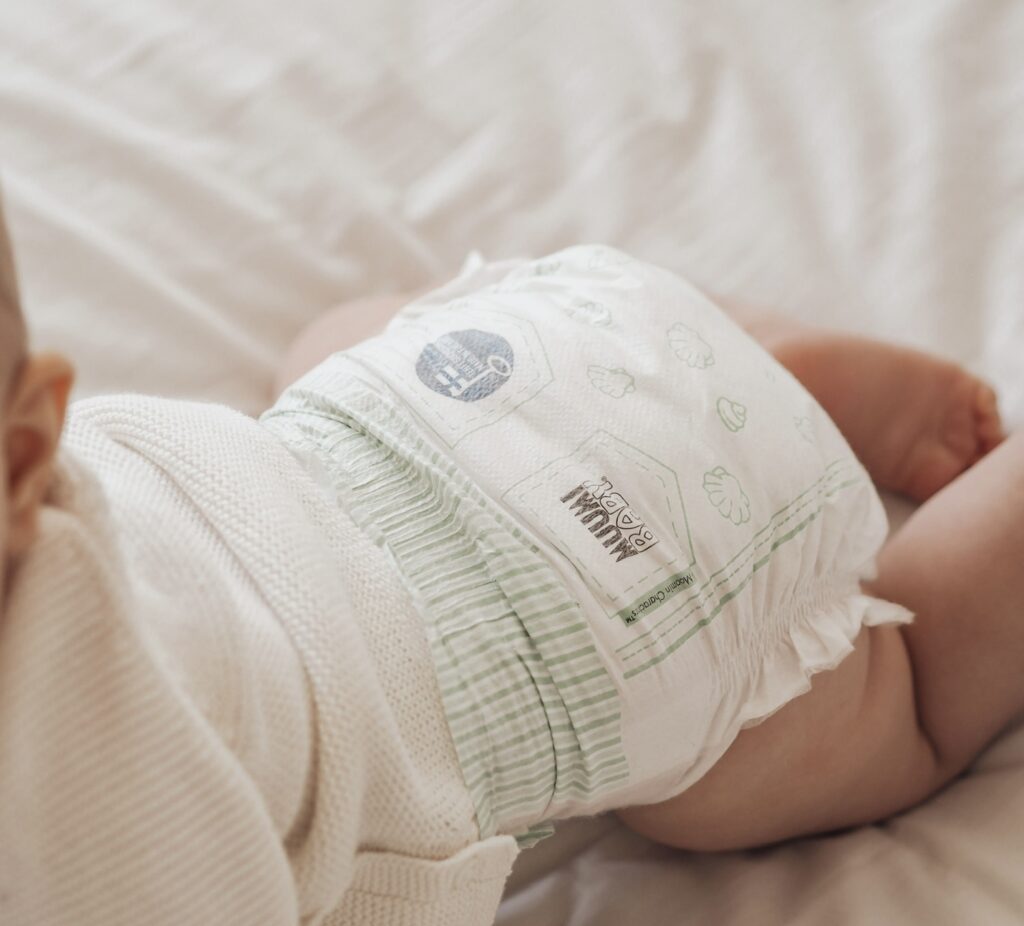
Changing a diaper on the move: Practical tips and supplies
Changing a diaper while travelling can be a challenge, but with the right equipment and preparation, it’s easy wherever you are. The first step is to pack your diaper changing supplies in a well-organised care bag. This bag should include clean diapers, wet wipes, diaper cream, a change of clothes and disposable diaper changing pads.
Disposable diaper changing pads are particularly handy when travelling, as they provide a clean and hygienic surface for diaper changing, after which they can be easily disposed of. This is particularly useful in public spaces where hygiene is not always in your own hands. If disposable trays are not an option, a foldable and easy-to-clean changing mat can be carried along.
Cleaning wipes and wet wipes are essential, but you might also consider packing small trash bags to dispose of used diapers and wipes. This will help keep the environment tidy and minimise odour pollution. It is also advisable to keep a hand sanitizer available at all times, as opportunities to wash your hands are not always guaranteed when you are on the move.
When travelling, it is a good idea to find places with proper changing facilities in advance. Many petrol stations, restaurants and shopping centres offer convenient facilities, but if they are not available, you can improvise a changing area by using the back seat or bench seat of a car, for example. Planning and foresight are key to making diaper changes on the move as easy and comfortable as possible. With everything you need at your fingertips and knowing where and how to change, you can travel with peace of mind and focus on enjoying your time with your baby.
Night-time diaper changes: How to manage as quickly and calmly as possible?
Night-time diaper changes can be challenging, but with a few practical tips, they can be done quickly and calmly so that both you and your baby can get back to sleep as soon as possible. The first step is to be prepared. Keep all the supplies you need, such as clean diapers, wet wipes and diaper cream, nearby on your nightstand or changing table for easy access.
Try to keep a dim lighting in the room during diaper changes. Bright light can disrupt your baby’s natural sleep rhythm and make it more difficult to fall asleep again. A subtle nightlight or flashlight that provides just enough light can make the task smoother without fully waking your baby. Be as quiet as possible and keep noises to a minimum. Avoid unnecessary talking and movement. However, soft, soothing speech or quiet humming can help keep your baby relaxed and calm. Keep a calm attitude yourself and avoid rushing, as babies can sense their parents’ moods.
When changing the diaper, use gentle movements and try to do it as efficiently and with as few steps as possible. This means a quick but thorough cleaning and putting the new diaper on without it being tight or too loose on the baby. If you use diaper cream, apply it gently and quickly. Once the diaper is changed, try to get your baby back to sleep as quickly as possible. Cover your baby warmly, rock them gently or give them a pacifier if it is a part of their sleep routine. These small steps can make nightly diaper changes much easier and ensure that you and your baby get the sleep you need.
Hygiene is particularly important in these environments.
Special situations: Changing diapers in a hospital or during a doctor’s visit
Diaper changing in a hospital or during a doctor’s visit may be different from changing at home and may require special preparations. Anticipation is key in these situations. Pack everything you need in your care bag, including clean diapers, wet wipes, diaper cream and disposable diaper changing pads. It can also be useful to take an extra tray with you on visits to the doctor, as hospital or clinic facilities are not always optimal for diaper changing.
When you arrive at the hospital or a doctor’s appointment, ask the staff where you can change diapers. Most places have special areas for this, but if not, you can improvise by using the reception room table or another suitable flat surface, of course on top of the changing platform. Hygiene is particularly important in these environments, so make sure you have your gloves available before and after a diaper change.
Be prepared for possible delays in schedules. Hospital and clinic schedules can be inflexible, so be patient and be prepared to entertain your baby if the waiting time is extended. Bring a few toys or books to keep your baby happy and busy. You should also be aware that hospital environments and clinics often have other patients, so keep noises to a minimum and try not to disturb others. If possible, ask another parent or carer to keep your baby calm and entertained to make diaper changes go more smoothly.
With these tips, you can make sure that changing diapers in the hospital or during a doctor’s visit is as smooth and comfortable as possible for your baby and yourself. Good preparation and a calm attitude will help you manage these special situations.
Moomin Baby diapers: Why are they a popular choice for parents?
Moomin Baby diapers have earned their place as a popular choice for many parents thanks to their unique features. These diapers combine quality, comfort and sustainability, making them an excellent choice for babies and parents alike. They are specially designed with baby’s sensitive skin in mind, and their soft and breathable material surface prevents skin irritation and diaper rash.
One of the great advantages of Moomin Baby diapers is their excellent fit. Their flexible sides and adjustable fit ensure that they stay in place and provide maximum freedom of movement for your baby. This is particularly important for active babies who are constantly on the move. They are also highly absorbent, keeping baby’s skin dry for a long time and reducing the need for diaper changes, especially at night. This can significantly improve the quality of sleep for both baby and parents. What’s more, Moomin Baby diapers come in different sizes, so you can find the perfect fit from newborn to toddler age.
Moomin Baby diapers are also an environmentally friendly choice. They are made from responsibly produced and certified materials, making them a more ecological alternative to traditional disposable diapers. This is an important factor for parents who want to minimise their family’s environmental impact. The combination of comfort, safety and environmental responsibility of Moomin Baby diapers makes them the ideal choice for demanding parents who want the best for their baby while caring for the environment. These diapers make diaper changing moments smooth and pleasant for both parties.
Discover our Moomin Baby products here!
How to make diaper changing a positive experience for both baby and parent?
Diaper changing doesn’t have to be a stressful moment – it can be a special moment that strengthens the bond between the baby and the parent. One key factor in creating a positive diaper changing experience is attitude. Approach the diaper change with a calm and positive attitude. Babies sense their parents’ emotions, so a calm and happy attitude can also help the baby to stay content.
Keep the changing area clean and comfortable. Use soft surfaces and make sure all the necessary supplies are easily accessible so you can focus on your baby. Comfortable and clean conditions create a pleasant environment where both the baby and the parent feel comfortable. Use durable and safe products during diaper changes, such as Moomin Baby diapers that feel comfortable on baby’s skin. This can reduce skin irritation and increase baby’s comfort, making the whole process easier for both of you.
Bonding with your baby is an important part of diaper changing. Keep eye contact, smile and talk gently to your baby. This can make the whole situation much more comfortable and reduce any tantrums. You can also sing or hum your baby’s favourite songs, which can even make diaper changing a fun time together.
Diaper changing can be more than just a necessary procedure. Good preparation, calming the environment and adding interaction can make it an enjoyable and important part of your daily care routine. These moments can become special moments of closeness and love that support the baby’s sense of security and strengthen the bond between the parent and the baby.
Learn how to start potty training with your baby here!





